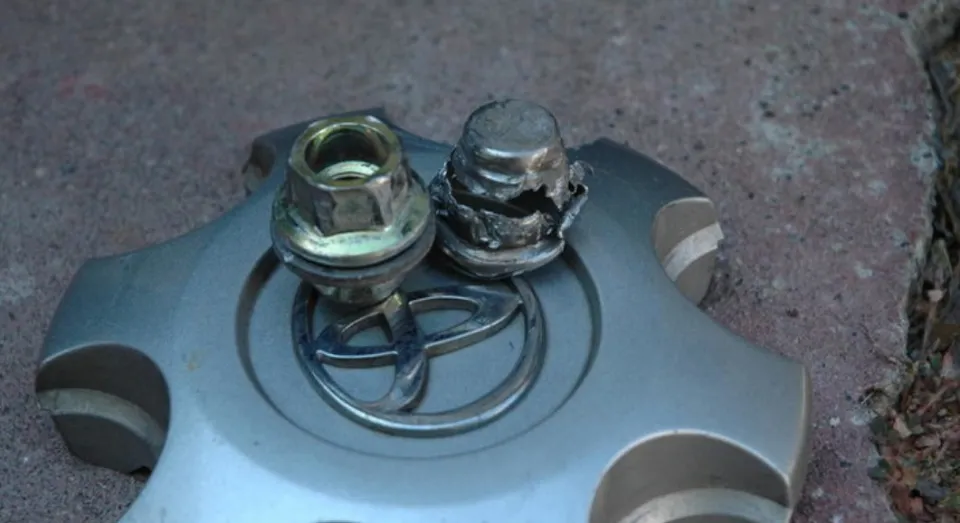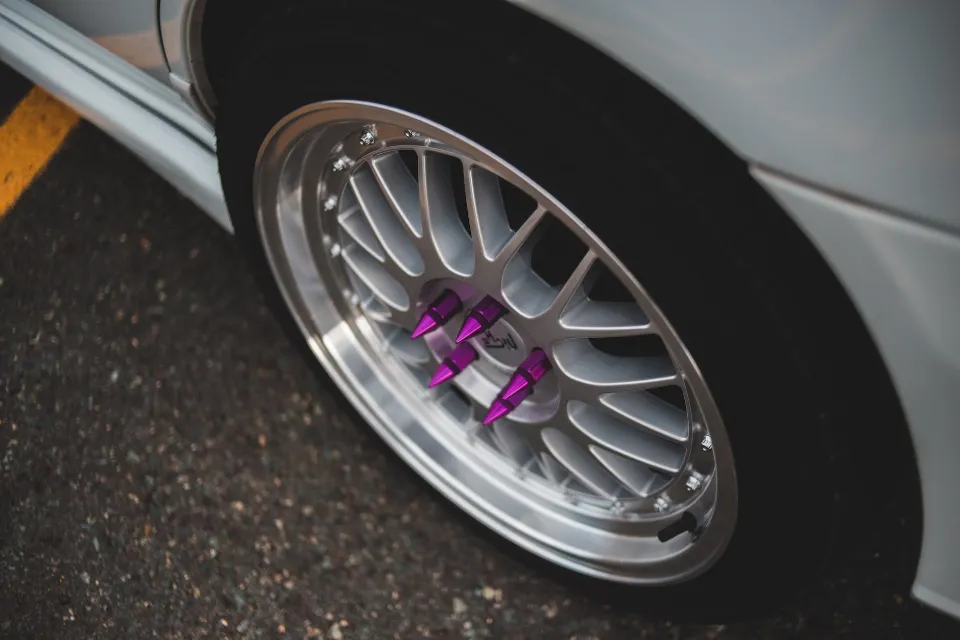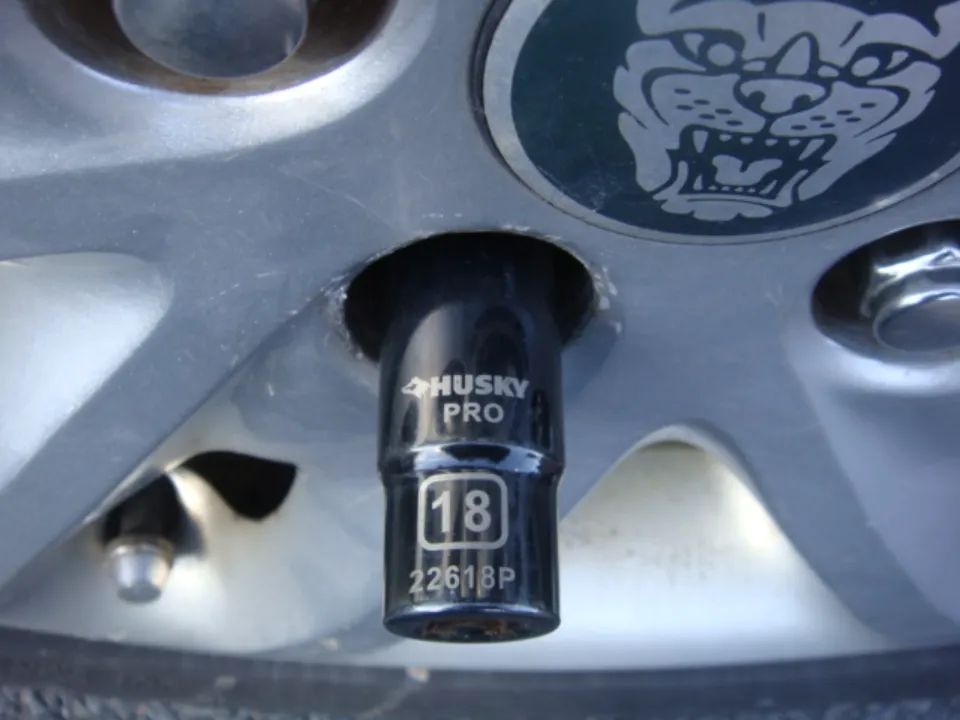Our guide will show you how to quickly remove a stuck or stripped lug nut without harming your rims.
- Hammer Socket Method
- Chisel and Hammer
- Weld a New Nut
- Bolt Extractor
When working on a car, a stripped lug nut is one of the most annoying issues you might run into. Most of the time, lug nuts get stuck when they are tightened too tightly.
In this post, we’ll show you four ways you can try to remove a stripped lug nut. Along with discussing the causes of lug nut stripping, this article offers some straightforward advice for avoiding the issue altogether.
Stripped Lug Nut Preparation
There is some preparation work to be done before you decide on a method to remove your stripped lug nut. This mainly entails liberally misting penetrating oil into the region where the lug nut contacts the wheel. Now, the key in this situation is high-quality penetrating oil. It can mean the difference between laboring for minutes or hours to remove the stripped lug nut.
With all due respect, WD-40 won’t work in this situation. You need a product like AeroKroil that’s designed specifically to “unfreeze” rusted nuts, bolts, and hardware. As long as you can, ideally overnight, you should let it soak in. Less of you is required the longer the penetrating oil has to work.

How to Remove a Stuck Or Stripped Lug Nut?
Using an extractor socket, hammer, and breaker bar is the most typical technique. Another useful tool is a blowtorch. In the event that those don’t work, think about using a portable grinder with a wrench. Additionally, you could use a hammer, chisel, and screwdriver.
Here’re some more details about these options for how to remove a stuck or stripped lug nut:
Hammer Socket Method
The first approach is a little clumsy, but the great thing is that it only needs a few things you already have. If you don’t already have a breaker bar, however, you might want to buy one. If necessary, a pipe placed over a socket wrench could be used.
The Hammer Socket Method is exactly what it sounds like; hammering a socket onto the lug nut. The socket needs to be one size smaller than your lug. The nut should be as rounded as possible for this technique to work; fewer points make it simpler to attach the socket.
Pick the size that works best because most lug nuts are between 17 and 21 millimeters. Additionally, you should choose a heavy hammer rather than a claw hammer because they are frequently too light.
Because you can apply more leverage with a heavy hammer in a single swing, they work better. If you strike the opposite end of the socket repeatedly, it may become difficult to attach the breaker bar or, if you strike it too hard, may be destroyed entirely.
When you notice that the socket is roughly halfway on, you should stop and attempt to loosen the nut. The socket shouldn’t be completely hammered on because doing so will make it very difficult to remove later.

Chisel and Hammer
Using a chisel and a hammer to loosen the lug nut is necessary for this technique. Ideally, you want to have a set of chisels on hand so you can see which fits your wheel depth and lug nut size. Once you have a pair that works, pick a point on top to the lug nut to rest your chisel.
By hitting the lug with the hammer in the hopes that it spins a little, you are attempting to free it. The chisel serves merely as a conduit for the hammer’s force to be transferred to the lug nut. Just to get it started so we can unscrew it normally with a socket, we’re trying to get one good strike. With the chisel and hammer, we are not attempting to split the nut in half, though it is a possibility.
Weld a New Nut
Some technical know-how is needed for this method. You must first possess a welder and be knowledgeable about the procedure. This procedure is not too difficult if you have access to a welder and are confident in joining metal. Simply weld over the top of the current lug nut.
After that, you can use that along with the breaker bar to hopefully remove the old and new lug nuts simultaneously. I wouldn’t advise using this technique if the barrels of your wheels are deep and not open to the surroundings. Metal splatter could possibly harm your wheels, which would create an additional mess.
Unless you really don’t care about the wheels getting damaged, this isn’t generally my preferred method. Removing a stripped lug nut, however, is a reliable method.
Bolt Extractor
To remove stripped and damaged nuts and bolts, an extractor socket was created. It has special helical veins that grab on like teeth to the lug nut and make it easy to extract.

To get rid of all different kinds of damaged fasteners, including lug nuts, there are tools like Eastwood’s 9-piece bolt extractor set. The sizes range from 1/4 to 3/4, working in both metric and imperial systems.
It’s a must-have for any DIYer who wrenches because sooner or later we all deal with a stripped bolt. Consequently, using an extractor socket is easy.
- Place the socket over the damaged lug nut
- As you start torque on the lug nut you will feel it bite and catch hold
- The nut should break free and be able to unscrew as normal
- Use pliers or steel punch to remove the lug nut from the extractor
Why Do Lug Nuts Get Stripped?
A stripped lug nut is one whose head (or points) have been rounded off. To allow the lug nut to be turned off the bolt, there are 6 points on the socket head that are designed to latch onto the lug nut’s 6 corresponding points.
- Corrosion and Rust
- Using Wrong Socket
- Incorrect Torque
Corrosion and Rust
The lug nuts on the wheel are made of metal. Corrosion and rust may develop when these are exposed to the weather and moisture. The lug nut threads deform once corrosion takes hold. It gets more challenging to remove them as the shape changes.
Using Wrong Socket
You need the correct size socket in order to remove the lug nut correctly. If you don’t, it will slide off as you try to take it off.
The socket slipping causes additional harm. Even if you manage to pull it off this time, you are making it harder the next time. A new, high-quality socket might be preferable if you’re using a very old, worn-out, or subpar socket. Future problems will also be avoided by doing this.

Incorrect Torque
Every lug nut should be tightened to the factory-specified level. This torque measurement is described in the service manual. You risk having the lug nut become stuck if you torque it too tightly. You shouldn’t go to a shady tire shop just for this reason.
How to Avoid Stripped Lug Nuts?
Avoiding a stuck lug nut situation is preferable to attempting to remove it. You won’t have to repeat the above steps if the proper prevention strategies are used.
You should avoid going to a sketchy tire store, to start. If the technicians are incompetent, they will strip the lug nut, leaving you to deal with the consequences. Visit a reputable store that has received positive reviews instead. You should check your lug nuts to make sure they can be removed after reinstalling them. The tire shop should be contacted as soon as possible if not.
Avoid over-torquing the nut if you choose to work on the wheels yourself. Your service manual will have the necessary specifications listed. If you don’t have the necessary equipment, you should either buy it or take your car to a mechanic.
The lug nuts need to be kept corrosion-free and clean as well. The nut will corrode if dirt and water are permitted to collect on the wheels. To prevent this problem, wash and dry the wheels frequently.
Conclusion: Remove a Stripped Lug Nut
As a result, there are a few techniques to try if your lug nut becomes stripped. For any of them to function properly, thorough preparation using penetrating oil is essential. There is nothing wrong with purchasing a new set of lug nuts if the old ones are worn out and don’t seem to fit very well.
These things can be avoided to a large extent by maintaining good maintenance and avoiding rust.





